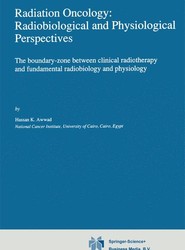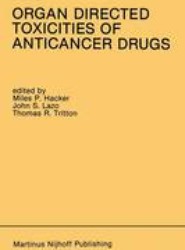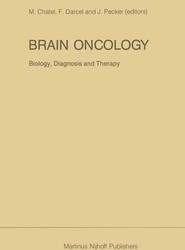(To see other currencies, click on price)
MORE ABOUT THIS BOOK
Main description:
Relapse of leukemia following successful remission-induction therapy remains a major obstacle in the treatment of patients with acute leukemia. Leukemia recurs most frequently in patients with acute myeloblastic leukemia (AML) and high risk acute lymphoblastic leukemia (ALL) following chemotherapy and less often in patients with low risk ALL and particularly in patient groups> submitted to allogeneic marrow transplantation. ' It is likely that the great majority of these recurrences originate from residual leukemic cells that survive initial remission-induction chemotherapy. Today, several research groups throughout the world place emphasis on studies concerned with the detection and treatment of 'minimal residual disease' (MRD). These investigations are conducted with the common objective to tackle the remaining cells. 'Minimal Residual Disease in Acute Leukemia: 1986' summarizes the fast advancements in this area. Several disciplines are concerned with the analysis of leukemic cells. The perspectives of cytogenetic and molecular genetic approaches for applica tion in the detection of MRD are reviewed. In this respect, modern cyto genetics provide highly specific tumor markers. The resolution of cyto genetic methods can be particularly improved when combined with other techniques which select relevant subpopulations of cells. Characterization of oncogenes and gene rearrangements, including those of immunoglobulin and T-cell receptor genes, and the measurement of gene products, have been established. Techniques based on these approaches offer interesting tools for the detection of MRD. New possibilities of employing monoclonal anti bodies are also presented.
Contents:
I - Detection of Minimal Residual Disease in Acute Leukemia.- New possibilities for cytogenetic analysis of leukemic cells.- Breakpoint analysis in CML: potentials for detection of minimal residual disease.- The mammalian ETS genes: two unique chromosomal locations in cat, mice and man and novel translocated position in human leukemias.- Activated RAS oncogenes in acute leukemia.- DNA rearrangements as unique markers of clonal evolution, recurrence and translocation.- The application of monoclonal antibodies for the detection and classification of AML.- Towards detection of minimal disease: discrimination of AML precursors from normal myeloid precursors using a combination of surface makers.- An immunological approach to analyse the kinetics of minimal residual disease in acute leukemia.- Visualization of minor cell populations with simultaneous three-parameter flow cytometry: BN rat marrow and spleen model.- Growth kinetics of minimal residual disease in the brown Norway rat acute myelocytic leukemia.- Detection of minimal residual acute lymphoblastic leukemia by immunological marker analysis: possibilities and limitations.- Surveillance of terminal deoxynucleotidyl transferase-positive cells in peripheral blood of patients with acute lymphoblastic leukemia.- In vitro colony forming cells of acute lymphoblastic leukemia: analysis of 24 cases with recombinant interleukin 2 as growth stimulus.- II - Intensive Chemotherapy Regimens for 'Minimal Residual Disease' in Acute Myeloblastic and Lymphoblastic Leukemia.- Biologic and treatment determinants of curability in acute myologenous leukemia.- High-dose cytosine-arabinoside plus AMSA for reinduction or consolidation-maintenance in acute myelogenous leukemia.- Treatment of residual disease in AML: interim analysis of a southeastern cancer study group prospective randomized clinical trial.- L-20 protocol for adult patients with acute lymphoblastic leukemia: a protocol utilizing prognostic factors, intensive chemotherapy and autologus "purged" marrow transplantation to eradicate minimal residual disease.- Treatment of minimal residual disease in adult ALL: the German national study.- Treatment of minimal residual disease in "poor risk" acute lymphoblastic leukaemia with high-dose cytosine arabinoside.- III Autologous Bone Marrow Transplantation for the Eradication of 'Minimal Residual Leukemia'.- Autologous bone marrow transplantation in first remission AML using non-purged marrow - update.- Double autografting: a potential curative regimen for acute leukaemia?.- Autologous bone marrow transplantation in acute nonlymphocytic leukemia. A study of ex vivo marrow treatment with 4-hydroperoxycyclophosphamide.- Attempts to eliminate residual acute myeloid leukemia from autologous bone marrow grafts through in vitro chemotherapy - a review.- Monoclonal antibody purged autologous bone marrow transplantation for relapsed non T-cell acute lymphoblastic leukemia.- Allogeneic and autologous marrow transplantation: ex vivo purging with monoclonal antibody or immunotoxins to remove leukemic cells or to prevent graft versus host disease.- Detection and selective destruction of tumor cells by the lipophilic dye, merocyanine 540.- IV Allogeneic Bone Marrow Transplantation for the Eradication of 'Minimal Residual Leukemia'.- Factors influencing long-term leukemia-free survival after allogeneic bone marrow transplantation for acute leukemia.- Bone marrow transplantation with HLA identical donors in the acute leukemias - Baltimore experience.- Results of allogeneic marrow transplantaton in patients transplanted for acute leukemia: a long-term follow-up.- Bone marrow transplantation in first CR of acute leukaemia using T-depleted marrow from HLA identical sibling donors.- Soybean lectin agglutination and E-rosette depletion for removal of T-cells from HLA-identical marrow grafts: results in 60 consecutive patients transplanted for hematologic malignancy.- Allogeneic bone marrow transplantation in adult leukemia: result of T-cell depletion by soybean lectin fractionation.- Rapid lymphocyte depletion by a new elutriator rotor for the prevention of acute graft versus host disease after allogeneic bone marrow transplantation.- Problems and prospect of histoincompatible bone marrow transplantation studied in rhesus monkeys.- Allogeneic marrow transplantation for the treatment of leukemia. Role of the major histocompatibility complex.- Summing up.- Minimal residual disease in leukemia: 1986.- Index of subjects.
PRODUCT DETAILS
Publisher: Springer
Publication date: November, 2011
Pages: 394
Weight: 623g
Availability: Available
Subcategories: Haematology, Oncology
From the same series
Dirk J. Ruiter
R. Verley
H.F. Seigler
Kenneth V. Honn
Franco M. Muggia
P. Hilgard
Noburo Kobayashi
James M. Church
L. Dogliotti
A. Giacosa
Seymour Garte
John Masters
Kintomo Takakura
B.A. Stoll
J. Mark Elwood
Laurence H. Baker
Laurence H. Baker
George D. Demetri
B.A. Stoll
A. Giacosa
Franco M. Muggia
Matthew J. van Zwieten
L.A. Liotta
Kenneth A. Foon
P.I. Reed
Paul H. Sugarbaker
Gabriel A. Kune
Frederick A. Valeriote
R. Ceriani
B. Lowenberg
D.G. Poplack
J. Bánóczy
Thomas R. Tritton
Miles P. Hacker
Aaron Polliack
Pelayo Correa
Alexander H.G. Paterson
Franco M. Muggia
J. Aisner
Stephen T. Sonis
F.J. Cleton
Kenneth V. Honn
Stephen T. Sonis
Soldano Ferrone
Stephen B Howell
C.C. Tijssen
B.W. Hancock
B.W. Ongerboer de Visser
A.P.M. Heintz
B.A. Stoll
A.M. Ward
Daniel L. Kisner
Marvin A. Rich
J. Gordon McVie
J.R. Ryan
Marvin A. Rich
Kenneth V. Honn
D.G. Poplack
Anthony J. Mastromarino
Frederick A. Valeriote
Marvin A. Rich
Laurence H. Baker
P.K. Pattengale
G.B. Snow
Frederick A. Valeriote














































































